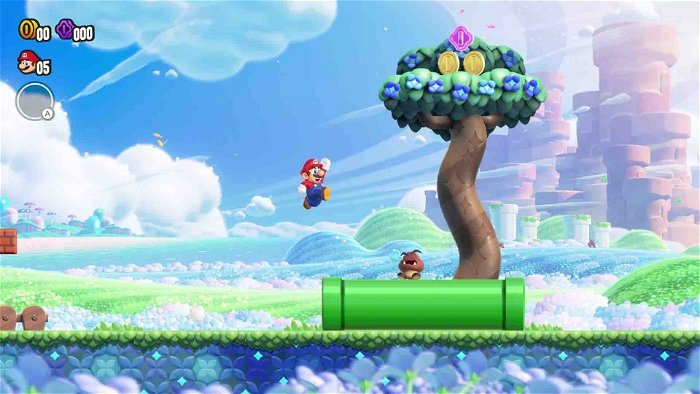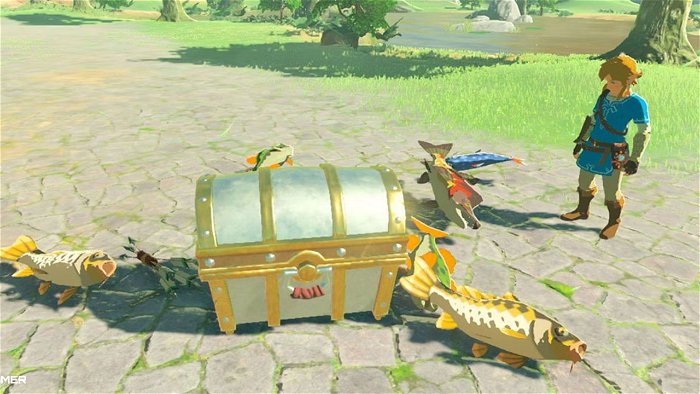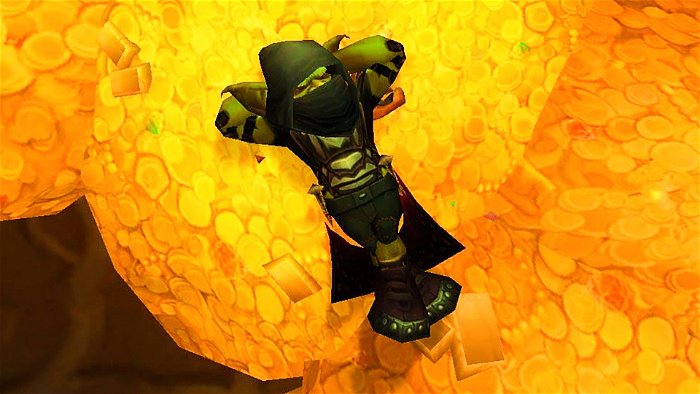In the sprawling universe of video games, the concept of an in-game economy is as old as the medium itself. From the iconic gold coins collected by Mario to the complex trade systems of today’s online worlds, the evolution of these virtual economies mirrors the sophistication and growth of video games.
This article delves into the journey from simple game mechanics to intricate economies that blur the lines between virtual wealth and real-world finances, highlighting a unique intersection with the realm of online casinos.
Historical Overview
The journey began in the pixelated worlds of classic video games, where collecting items or currency was a straightforward mechanic. In Super Mario Bros., players collected coins for extra lives, introducing the concept of currency as a reward system. Similarly, The Legend of Zelda featured rupees, used to purchase items and upgrades, laying early foundations for in-game economies.
Super Mario Bros:

In Super Mario Bros., the act of collecting coins goes beyond a mere score-keeping mechanism, offering tangible in-game benefits such as extra lives for every 100 coins collected. This introduced players to a basic form of in-game economy where the collection of currency directly impacts gameplay and progression. The concept was simple yet revolutionary, embedding the idea of value and reward within the gaming experience. Coins hidden in secret blocks and challenging locations also added an element of exploration and risk-reward strategy, encouraging players to engage more deeply with the game world.
The Legend of Zelda:

The Legend of Zelda took the concept of in-game currency further by introducing rupees as a versatile currency for purchasing a wide array of items and upgrades. From bombs to arrows and even magical items, rupees enabled players to customize their gameplay experience according to their strategy and needs. This not only diversified the game’s economy but also laid the groundwork for more complex economic systems in future titles. The need to manage resources carefully, deciding when to save or spend, added a layer of strategic depth to the game, blending adventure with economic decision-making.
These examples mark the early steps towards intricate in-game economies, showcasing how the integration of currency and resource management into gameplay mechanics can enrich the gaming experience, adding layers of strategy, progression, and immersion. As video games evolved, these foundational ideas expanded, leading to the sophisticated economies seen in today’s gaming landscape.
The Rise of Online Gaming Economies
As video games evolved into online platforms, their economies grew increasingly complex. Games like World of Warcraft and Eve Online developed intricate economic systems featuring unique currencies, auction houses, and even instances of inflation. These virtual economies became testbeds for economic theories, with players engaging in trade, investment, and resource management on unprecedented scales. The emergence of these elaborate in-game economies has not only reshaped the gaming landscape but also provided valuable insights into real-world economic principles and behaviours.
World of Warcraft:

World of Warcraft is renowned for its expansive virtual economy, where players engage in gathering, crafting, and trading goods ranging from basic materials to rare items and services. Gold, the game’s primary currency, is earned through quests, looting, and trade with other players. WoW’s auction houses serve as the central hubs for this economic activity, allowing players to buy and sell goods in a dynamic market environment.
This system has led to real-world economic phenomena such as inflation, market speculation, and even the creation of “gold farms,” where players earn in-game currency to sell for real money. The complexity and scale of WoW’s economy have made it a subject of study for economists and gamers alike, illustrating the depth of social and economic interactions possible in virtual worlds.
Eve Online:

Eve Online takes the concept of an in-game economy to an even more complex level, with a player-driven economy that closely mimics real-world economic systems. The game features its own currency, ISK, which players earn through various activities such as mining, manufacturing, and trading. Eve’s economy is notable for its depth and complexity, with players controlling vast corporate empires, engaging in trade wars, and even affecting the game’s political landscape.
The market system in Eve Online is entirely governed by player actions, leading to real economic concepts such as supply and demand, market manipulation, and economic bubbles. The game’s economic model has been praised for its realism and has been used as a model in economic studies, showcasing the potential of virtual economies to simulate and teach real-world economic principles.
These examples from World of Warcraft and Eve Online highlight the sophistication of online gaming economies, demonstrating how virtual worlds can create rich, immersive experiences that extend beyond simple gameplay. These economies allow players to experience complex economic interactions, offering insights into resource management, market dynamics, and the social aspects of trade and cooperation.
As such, they represent a significant evolution in the design and implementation of in-game economies, setting a benchmark for future developments in the gaming industry.
Microtransactions and Game Currencies
The advent of microtransactions introduced real-world money into the virtual economy equation. Titles like Fortnite use in-game currencies (V-Bucks) that players can purchase, merging gameplay with financial investment. This model has become a staple in the industry, reshaping how players interact with games and highlighting the tangible value of virtual goods.
Real Money Trading (RMT) and Its Impact
Real Money Trading (RMT) takes the integration of finances and gaming to new levels. Players buy and sell in-game currency or items for real money, creating a parallel market that operates alongside the game itself. This practice has become increasingly common, blurring the lines between virtual and real-world economies. RMT has significant implications for game design, player behaviour, and the overall gaming experience, as it introduces real financial stakes into what was once a purely virtual realm.
Casinos in Games and Real Money Gambling

The inclusion of casinos within video games epitomizes the confluence of gaming and gambling. The Diamond Casino & Resort in Grand Theft Auto Online offers players a simulated gambling experience, complete with games of chance. This virtual casino serves as a bridge to discussing online casinos in the real world, some of which offer minimum deposits of 10 dollars or even less in some cases. While both in-game and online casinos provide entertainment, the real-world implications of gambling—such as regulation and the risk of addiction—contrast sharply with the relatively consequence-free nature of virtual gambling.
The discussion of minimum deposit casinos highlights an accessible entry point for those interested in online gambling, underscoring the importance of responsible gaming practices and the legal frameworks that support them. The parallels and differences between these virtual and real-world experiences offer a fascinating glimpse into how digital and physical realms influence each other.
Real-world finances reflect the growing sophistication of video games
The evolution of in-game economies from simple coin collections to complex systems intertwined with real-world finances reflects the growing sophistication of video games. As these virtual economies continue to develop, they challenge our understanding of value, trade, and investment.
The integration of real-world financial practices, such as online gambling, into gaming raises important questions about the future of these digital worlds. Will the distinction between virtual and real economies further blur, and how will this impact both the gaming industry and its audience? Only time will tell, but one thing remains clear: the intersection of gaming, finance, and law is fertile ground for continued exploration and innovation.
This exploration into the world of in-game economies illuminates the intricate ways gaming intersects with real-world finances and underscores CGMagazine’s commitment to delving deep into the cultural and economic aspects of gaming. As we stand at the crossroads of virtual economies and real-world financial systems, the conversation about their future is more relevant than ever.



